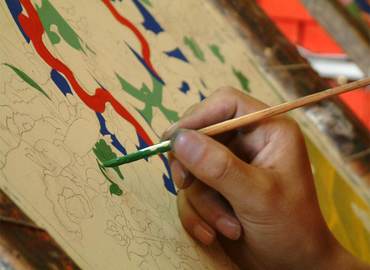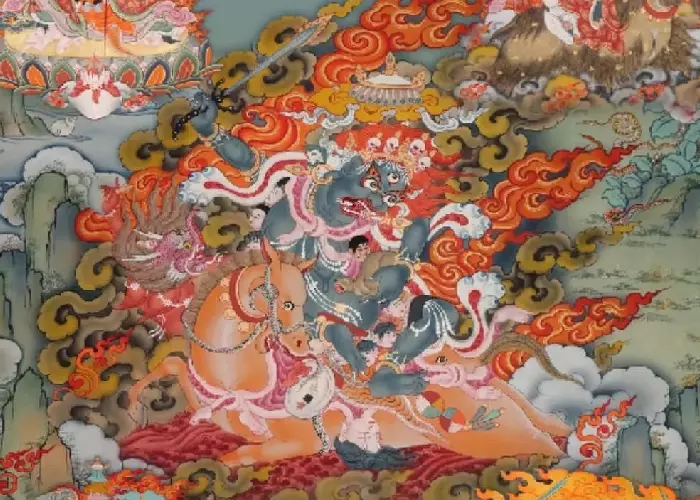Tibetan Medicine
- Catherine
- Last Updated : 12/08/2025
Tibetan medicine is a kind of traditional medicine spread in the Tibetan areas. Medicine is one of the Five Sciences (branches of knowledge) in Tibetan Buddhism. Tibetan medicine believes in the basic doctrine of Buddhism that all diseases are caused by the three poisons of greed, aversion, and delusion. Following the Buddha's Four Noble Truths, Tibetan medicine use medicine to fight greed, aversion, and delusion in order to avoid suffering. Today, it learns from and integrates with many advanced medical systems, and will better serve the health of the Tibetan people and the people of the world.
Origin
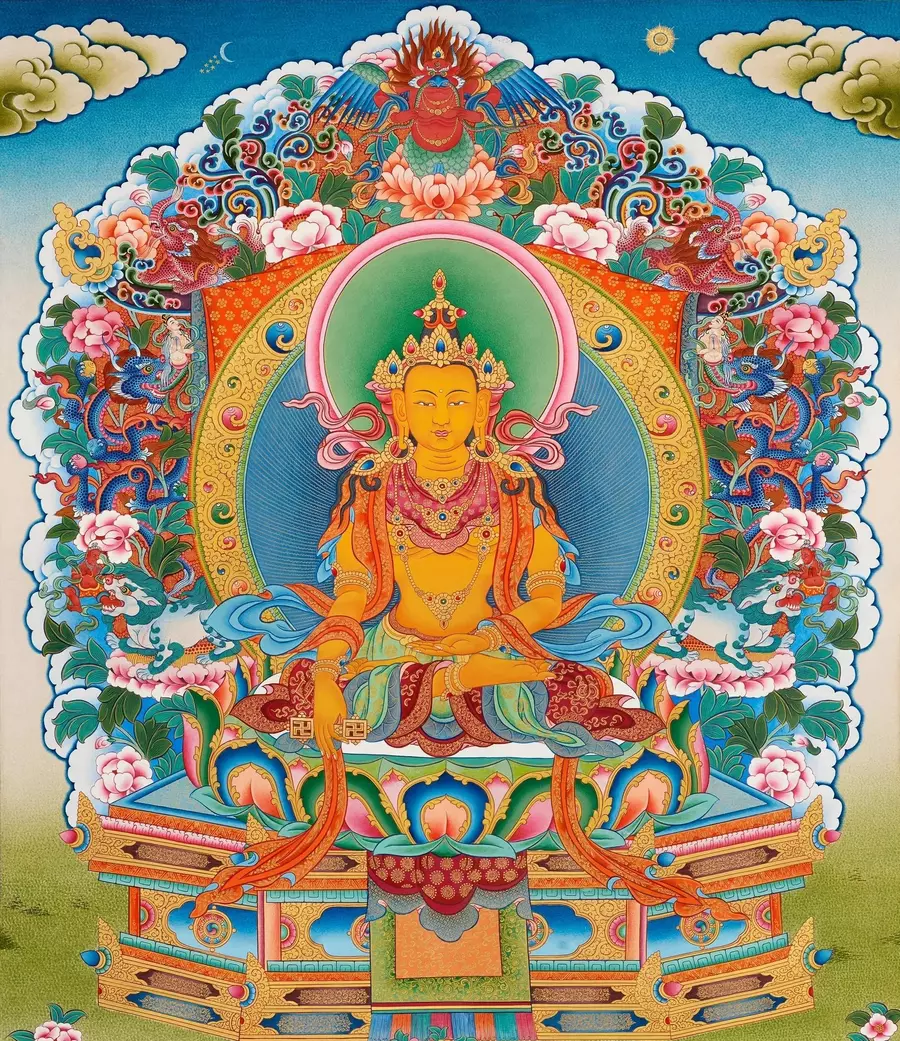
Tönpa Shenrab Miwoche was the earliest Tibetan physician, from Zhangzhung—the birthplace of Tibetan culture and the Bon religion. According to Bon tradition, he studied Bon teachings from a young age and observed nature extensively, concluding that all things are made of four elements: earth, water, fire, and wind, whose interactions drive all changes. His son, Jebu Chusi, inherited his medical knowledge and compiled it into Mogu Dremi, one of the source texts of the Four Medical Tantras.
In the 7th century. Songtsan Gambo invited doctors from China (Tang Dynasty), India, Central Asia, Rome, and Persia to Tibet and absorbed the excellent medical culture. At the end of the 8th century, more physicians were invited, while the doctrines of Buddhism in medicine were brought from India to Tibet. During the 11th and 12th centuries, many Indian medical documents were widely distributed to Tibet and translated into Tibetan. Subsequently, a large number of Indian Buddhist medical practices based on medical anatomy were introduced to Tibet. Till today, Tibetan medicine, based on Indian Buddhist literature and Ayurvedic traditional medicine, still exists and develops in Tibet, India, Nepal, Bhutan, Ladakh, Siberia, Mainland China, and Mongolia.
Main Tibetan Medicine Theory
Tibetan medicine takes the theories of the Three Fundamental Principles and the Five Sources as its core principles.
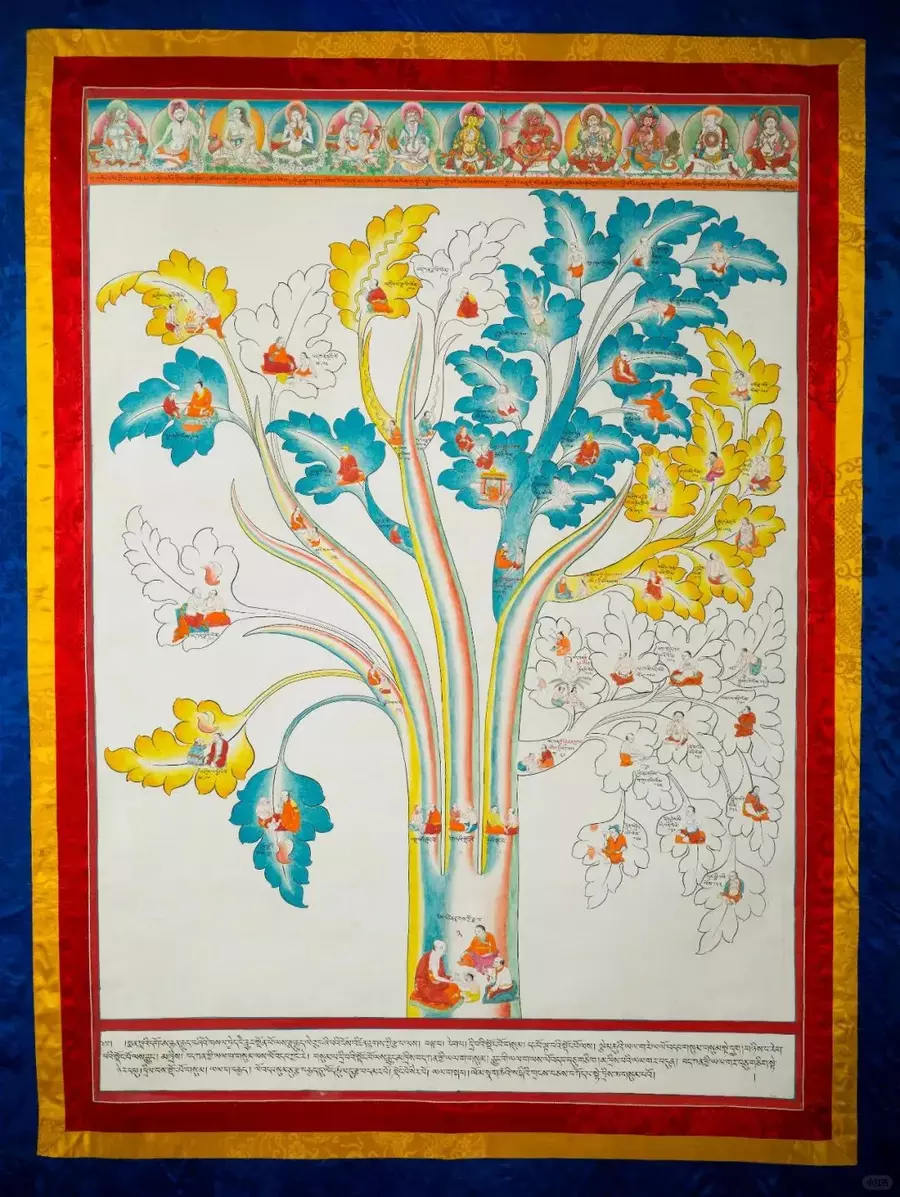
1. According to Tibetan medical theory, there are Three Fundamental Principles (three energies) in the human body, namely Loong (wind/air, marked in blue), Tripa (fire, marked in red), and Beken (earth and water, marked in yellow); and seven material bases as well as three excretions. The three fundamental principles dominate and control the movement of the seven material bases and the three types of excreta. Under normal conditions, the three major causes maintain balance and play the role of dominating and controlling the normal physiological activities of the human body. Once the three causes are out of balance, it will cause diseases in the human body. With the changes of the three factors, the types of diseases, location, and severity are also different. In this case, the three major factors play the role of pathological mechanisms. Through the function of Loong, blood circulates to the whole body. If there is blood without the function of Loong, the blood will stop flowing without power. If there is Loong without blood, the body will dry up. When the blood and loong are exhausted, the body would be lifeless.
- Three principles of function:
- Loong is the source of the body's ability to circulate physical substances (e.g., blood), energy(e.g., nervous system impulses), and the non-physical (e.g., thoughts).
- Tree-pa is characterized by heat and is the source of many functions such as thermoregulation, metabolism, liver function, and discriminating intellect.
- Pay-genn is characterized by cold and is the source of many functions such as aspects of digestion, the maintenance of our physical structure, joint health, and mental stability.
- Seven material bases: Nutritional elements in the diet, blood, flesh, fat, bone, bone marrow, and semen
- Three excretions: Feces, Urine, Sweat.
2. Tibetan medicine incorporates the Five Elements (Wuxing) theory from traditional Chinese medicine to explain human physiology, pathology, and the relationship between the body and the external environment, forming the basis for dialectical treatment. The theory of the Five Elements—Wood, Fire, Earth, Metal, and Water—is primarily applied in pulse diagnosis in Tibetan medicine. By associating the internal organs with the Five Elements, practitioners interpret changes in the pulse to analyze health conditions. In this system, each Zang (solid organ) is paired with a Fu (hollow organ), and each pair corresponds to one of the elements. For example: the liver belongs to wood; the heart to fire; the spleen to earth; the lungs to metal; and the kidneys to water. Accordingly, the gallbladder, small intestine, stomach, large intestine, and bladder correspond to these elements.
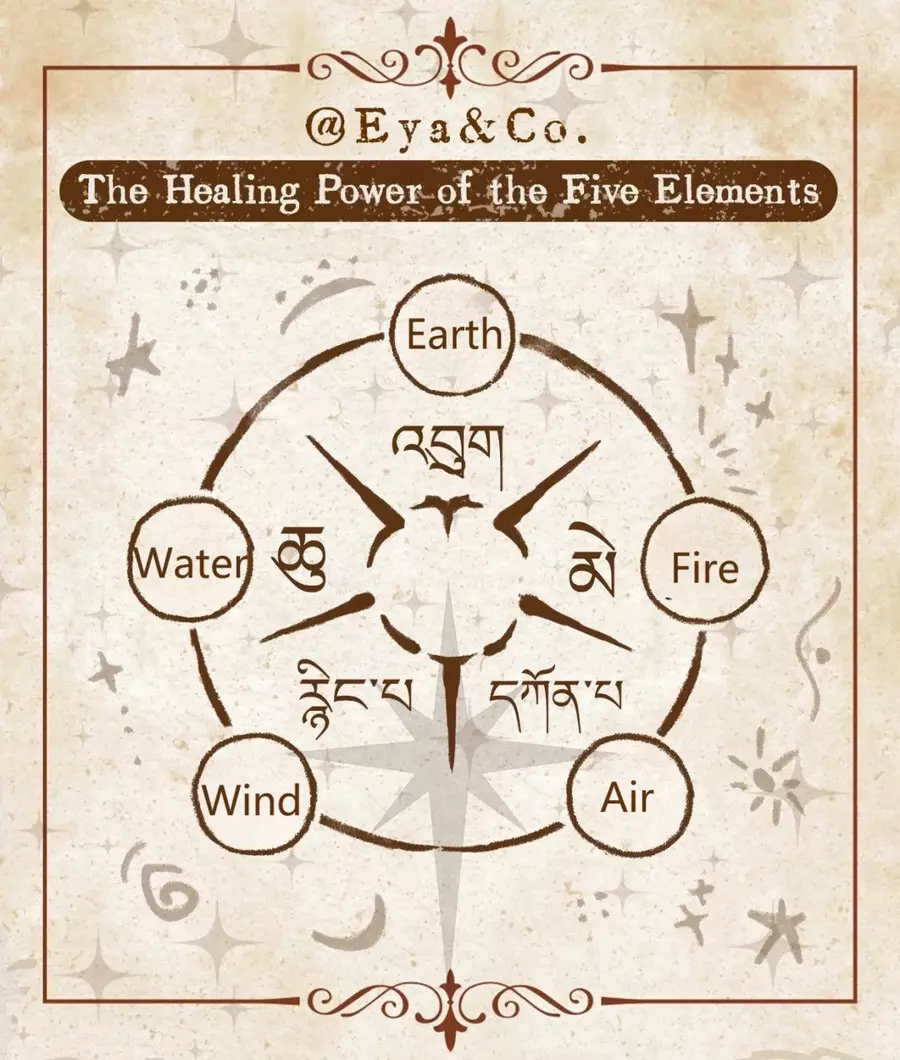
As early as the late 8th century, Tibetan medicine drew on the content of the Chinese classic Moon King’s Medical Diagnosis and further developed the Five Elements theory in the Tibetan medical text Four Medical Tantras. Additionally, Chinese medicine explains the transmission and transformation of diseases using the interrelationships among the Five Elements, such as generation (Wood generates Fire, Fire generates Earth, Earth generates Metal, Metal generates Water, Water generates Wood) and restriction (Wood restrains Earth, Earth restrains Water, Water restrains Fire, Fire restrains Metal, Metal restrains Wood), which also provides theoretical support for Tibetan medical practices.
3. In the Tibetan medical theory known as the "Five Resources", all phenomena in the universe are categorized into five fundamental substances—Water, Fire, Earth, Wind, and Space—based on their nature, function, and form. Through a process of deduction and observation, Tibetan medicine classifies everything into these five elemental sources, with Space representing the domain in which all matter exists and moves.
According to Tibetan medicine, these five proto-elements permeate all space and form the foundation from which all things in the natural world arise. At the same time, the human body—particularly the five solid organs (zang) and six hollow organs (fu)—serves as both a reservoir for the essence of the five elements and a container that transforms and eliminates their residuals.
- The heart is the seat where the essence of Space gathers and serves as the basis of consciousness.
- The lungs store the essence of Wind, making them responsible for respiration.
- The liver holds the essence of Fire, serving as the source of heat and energy.
- The spleen stores the essence of Earth, providing solidity and assimilation.
- The kidneys are where the essence of Water resides, governing moisture and lubrication.
Unlike the Five Elements Theory in Traditional Chinese Medicine, which emphasizes dynamic relationships of generation and control (mutual creation and restriction), the Five Proto-Elements in Tibetan medicine are seen as independent entities with their own unique properties and functions. There is no hierarchy of mutual generation or restriction; instead, these elements interact and combine in various ways to form all aspects of existence.
Main Tibetan Herbal Medicine And Others
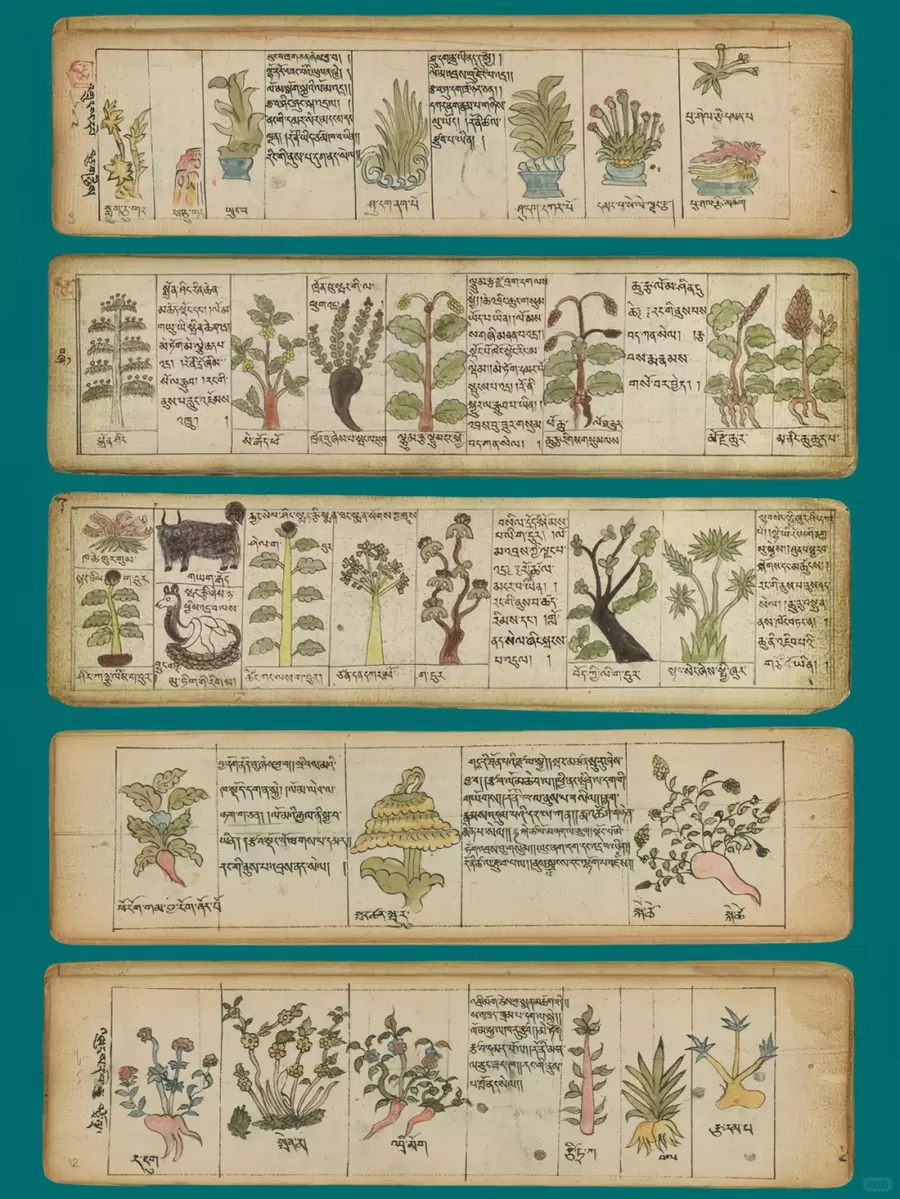
According to relevant statistics, there are about 3,000 kinds of Tibetan medicine in China. Tibet is the birthplace of Tibetan medicine, and there are more than 360 kinds of commonly used Tibetan medicines, mainly derived from plants such as Compositae, Leguminosae, Ranunculaceae, Papaveraceae, Umbelliferae, Gentianaceae, Rosaceae, Scrophulariaceae, Cruciferae, and Liliaceae. The important medicinal genera are artemisia, corydalis, primrose, and horsetail, etc. Due to the unique climate, environment and altitude of the Tibetan plateau, Tibetan medicine uses many local species, such as saffron and Cordyceps Sinensis, etc. In addition to herbs, accessories made of yak bones, such as bracelets, are thought to help the body balance energy. These Tibetan medicine bracelets inlaid with coral and turquoise or with minerals such as metal, copper, silver, and brass may alleviate anxiety, calm the nerves, or help promote healthy blood flow and circulation.
Treatment Methods
Tibetan medicine emphasizes overall balance and harmony with natural laws. Its diagnostic methods include inquiry, observation, palpation, pulse diagnosis, and urine analysis. Treatment focuses on dietary adjustment, regulated daily routines, medicinal therapy, and external treatments. Medicines are mostly derived from natural mineral, plant, and animal resources (such as precious pills and herbal remedies). Common external therapies include bloodletting, moxibustion, medicinal baths, hot spring therapy, massage (including the unique Tibetan “Jiu Ci” massage), and rubbing therapy, all aimed at regulating the dynamic balance of the three humors—Loong, Tripa, and Beken—to prevent and treat diseases.
Conclusion
Rooted in centuries of wisdom and enriched by exchanges with neighboring medical traditions, Tibetan medicine remains a living system that blends spiritual insight with practical healing. By emphasizing balance between body, mind, and environment, it not only addresses physical ailments but also nurtures inner harmony. Today, while it continues to preserve its ancient principles, Tibetan medicine adapts to modern knowledge, offering a holistic approach to health that speaks to people across cultures and generations.
Email response within 0.5~24 hours.


